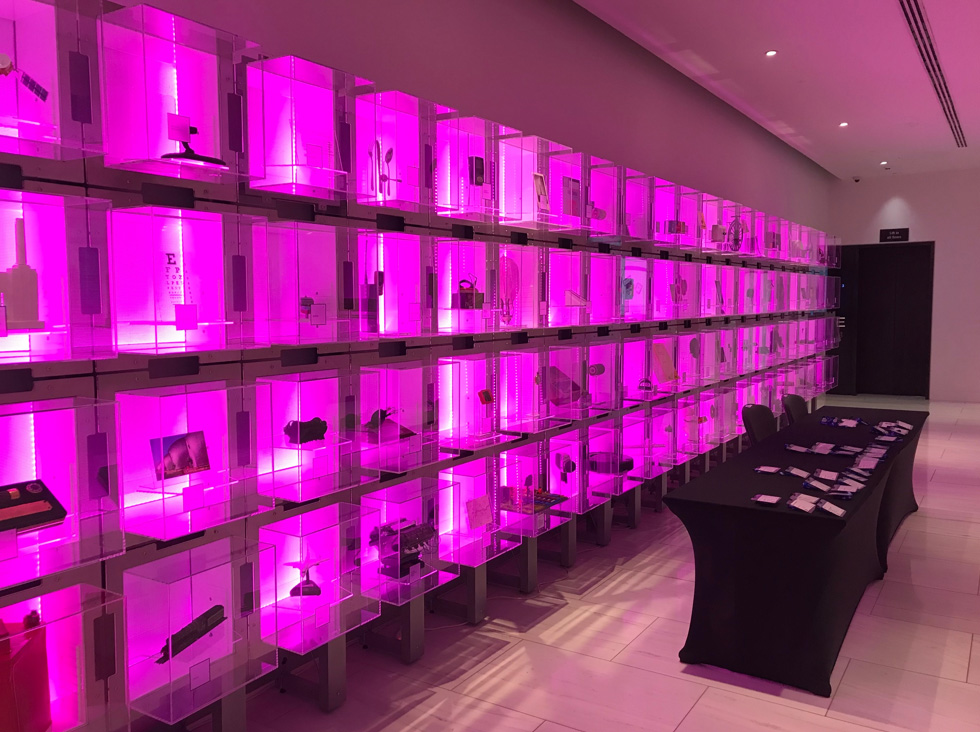- Call: 0203 427 3507
- Email: innovation@clustre.net

A few minutes spent with this display are all it takes to be reminded of the breadth of human invention. It’s almost as though we’re programmed to be innovative in everything we do.
And then you look at the people behind these ideas. Often mavericks, working in small teams, outside the mainstream, fuelled by passion, breaking the rules and challenging the status quo.
It gets you thinking. Is there a recipe for this sort of creativity?
How can I get people in my organisation to be this inventive?
There are as many potential solutions to this problem as there are organisations trying to solve it, and some are more successful than others. Having seen a great deal of what works and even more of what doesn’t, I thought I’d try to distil the essential prerequisites of successful innovation into a simple checklist.
Turns out it’s not that simple (I’m up to 25 prerequisites and counting) but there are four themes emerging which seem to me to get to the heart of the problem:
Unfortunately, these bottom-up, idea-led innovation programmes are rarely successful. It’s like throwing darts blindfold, with little chance of hitting the dartboard and even less of hitting the bullseye. It seems to me the most successful innovation programmes start by identifying the most pressing issues.
More generally, innovation is successful when it is seen as a strategic imperative, a source of competitive advantage or a way to prevent disruption.
And when it is focused on real business opportunities with measurable benefits.
By identifying sources of customer frustration, companies can focus innovation on transforming their customers’ experience in ways that surprise and delight them.
Perhaps the most well documented example is the rise of Uber
And, of course, this level of transformational innovation often has a knock-on effect on the whole industry.
So, either you’re listening to your customers, watching your competitors and responding rapidly with your own innovative solutions or you’re going to be left behind.
And for good reason. It is these tried and tested methods which ensure operational efficiency and guarantee standards of customer service.
Unfortunately, these constraints stifle innovation. They inoculate the organisation from the impact of crazy ideas.
I’ve lost count of the number of times I’ve seen enthusiastic executives embrace an innovative solution only for the initiative to flounder in the face of procurement policies and internal approval processes.
Whatever the mechanism, innovation is most likely to be successful when it is freed from normal organisational constraints and provided with the funding and authority necessary for rapid decision making.
And, equally importantly, when there are pathways for rapid adoption and rollout of the innovation once it is proven.
Some years ago, I was privileged to work with the newly appointed CEO of a highly innovative start-up bank being created by a multi-national financial services company. He had been plucked from his role as the MD of a successful business to lead this high-risk project. The group CEO asked him to do this personally and made it clear, succeed or fail, this was a positive career move. This encouragement laid the foundations for an extremely successful and innovative new business.
In contrast, I’ve often seen senior executives approach similar roles with some trepidation. Even when it’s their own idea, the risk of being asked to bet their careers is too much. Better to play safe, or at least hedge your bets. This sort of thinking is anathema to innovation.
In order to innovate successfully, an organisation must support its mavericks and risk takers.
These are the innovation role models. There must be passion and enthusiasm for innovation and successful innovation must be recognised and celebrated. And, just as importantly, failures must be accepted and not attract blame or punishment.
These four themes encompass many of the prerequisites for successful innovation, but of course there are many others, including effective collaboration, agility and the use of innovative products from niche technology companies.
These prerequisites underpin the Clustre Innovation Diagnostic which we use to highlight the strengths and weaknesses of a company’s approach to innovation and to develop specific, actionable recommendations for improvement.
I’m sure everyone reading this article will have at least one additional prerequisite or theme they have found is essential. If so, please share in the comments …
Andrew Simmonds is Consulting Director at Clustre – the innovation brokers – www.clustre.net
To learn more about Clustre’s Innovation Diagnostic please click here.
Or email andrew.simmonds@clustre.net
To learn more about the 100 ideas that changed the world please visit this IET link